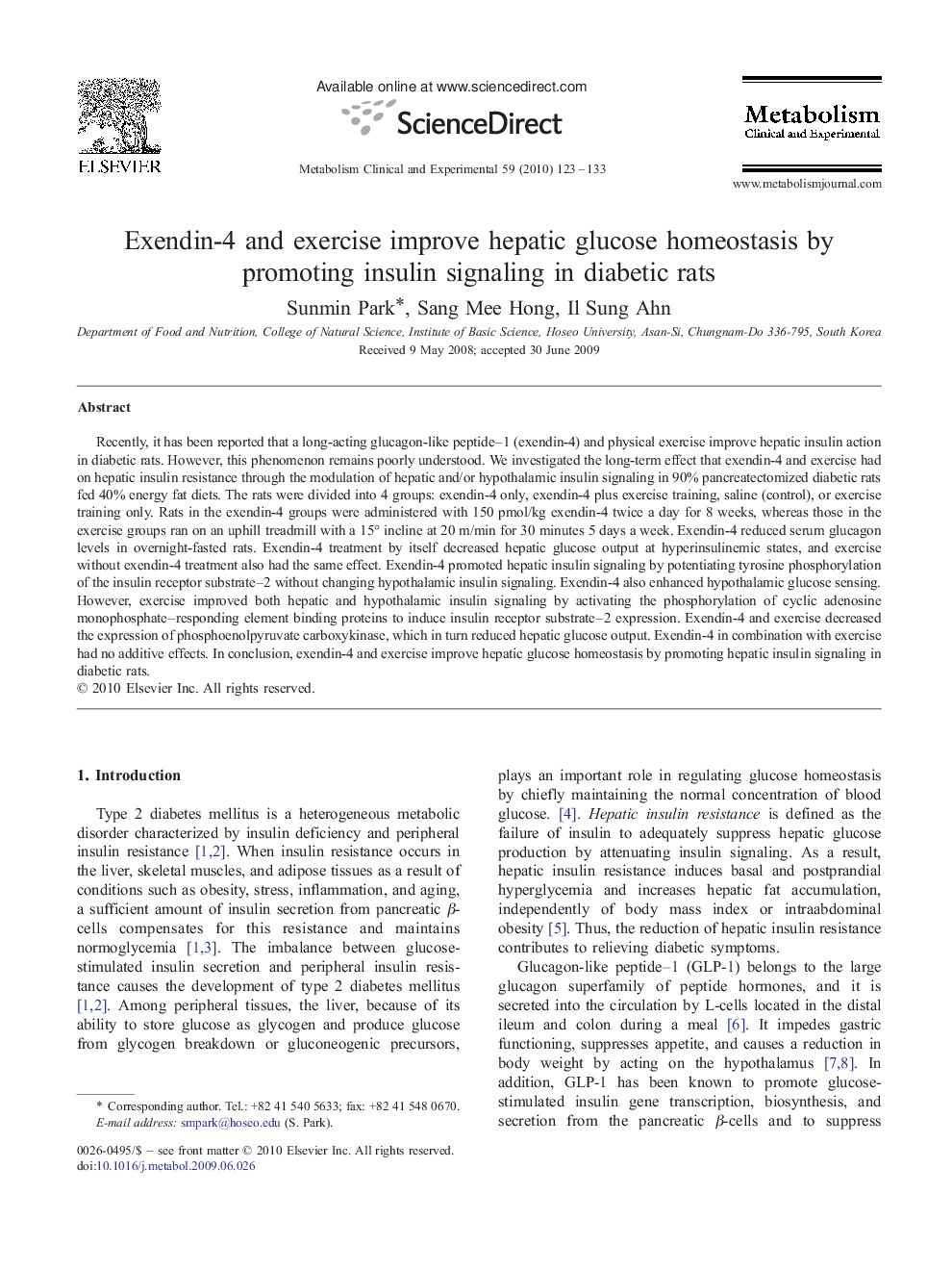| Article ID | Journal | Published Year | Pages | File Type |
|---|---|---|---|---|
| 2806353 | Metabolism | 2010 | 11 Pages |
Recently, it has been reported that a long-acting glucagon-like peptide–1 (exendin-4) and physical exercise improve hepatic insulin action in diabetic rats. However, this phenomenon remains poorly understood. We investigated the long-term effect that exendin-4 and exercise had on hepatic insulin resistance through the modulation of hepatic and/or hypothalamic insulin signaling in 90% pancreatectomized diabetic rats fed 40% energy fat diets. The rats were divided into 4 groups: exendin-4 only, exendin-4 plus exercise training, saline (control), or exercise training only. Rats in the exendin-4 groups were administered with 150 pmol/kg exendin-4 twice a day for 8 weeks, whereas those in the exercise groups ran on an uphill treadmill with a 15° incline at 20 m/min for 30 minutes 5 days a week. Exendin-4 reduced serum glucagon levels in overnight-fasted rats. Exendin-4 treatment by itself decreased hepatic glucose output at hyperinsulinemic states, and exercise without exendin-4 treatment also had the same effect. Exendin-4 promoted hepatic insulin signaling by potentiating tyrosine phosphorylation of the insulin receptor substrate–2 without changing hypothalamic insulin signaling. Exendin-4 also enhanced hypothalamic glucose sensing. However, exercise improved both hepatic and hypothalamic insulin signaling by activating the phosphorylation of cyclic adenosine monophosphate–responding element binding proteins to induce insulin receptor substrate–2 expression. Exendin-4 and exercise decreased the expression of phosphoenolpyruvate carboxykinase, which in turn reduced hepatic glucose output. Exendin-4 in combination with exercise had no additive effects. In conclusion, exendin-4 and exercise improve hepatic glucose homeostasis by promoting hepatic insulin signaling in diabetic rats.
